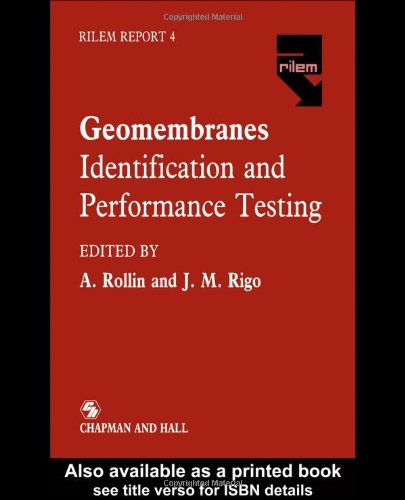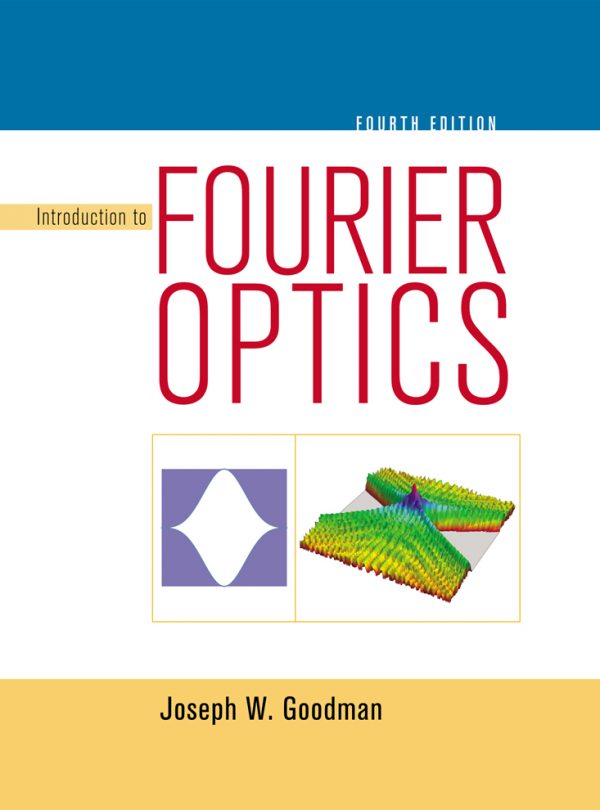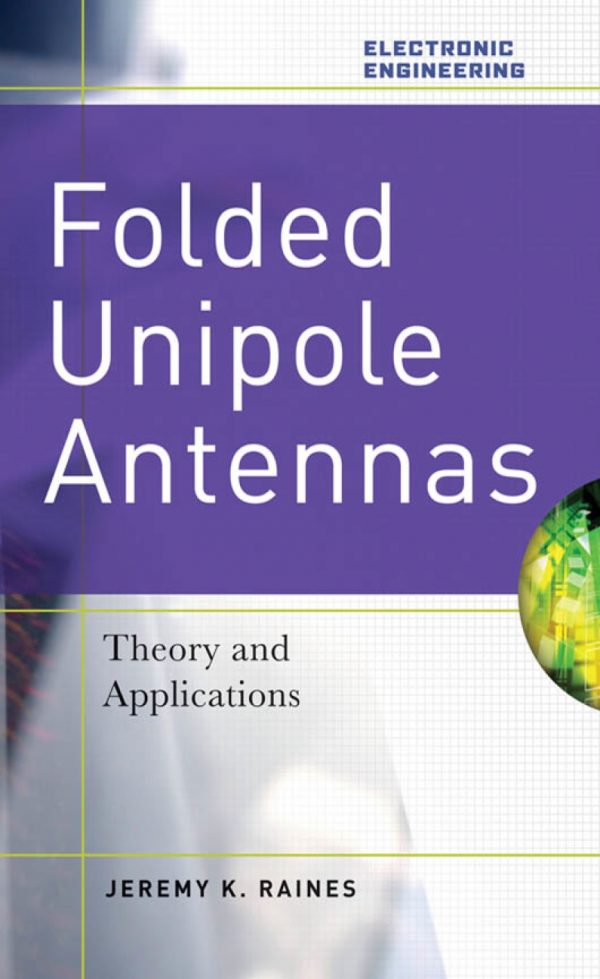J.M. Rigo, A.L. Rollin0412385309, 9780412385308
Table of contents :
BOOK COVER……Page 1
HALF-TITLE……Page 2
TITLE……Page 4
COPYRIGHT……Page 5
CONTENTS……Page 6
PREFACE……Page 8
DEDICATION……Page 10
PART ONE GENERAL TOPICS……Page 11
1–2 Historic solutions……Page 12
1–3 Background of modern liners……Page 14
1–4 Various geomembrane types……Page 15
1–5 Geomembrane Seam Types……Page 18
1–6 Major application categories……Page 20
1–7 Future trends and growth……Page 23
References……Page 25
2.1 Introduction……Page 28
2.2.2 Density or specific gravity……Page 29
2.2.4 Tensile tests……Page 30
2.2.5 Flexibility at low temperature……Page 31
2.2.6. Infra-red analysis (IR)……Page 32
2.2.7 Differential scanning calorimetry (DSC)……Page 33
2.2.9 Thermomechanical analysis (TMA)……Page 34
2.2.10 Chromatography (GC and HPLC)……Page 35
2.2.14 Hardness……Page 36
2.2.16 Penetration (for bitumen)……Page 37
2.3 Performance tests……Page 38
2.3.1.1 Tear test……Page 40
2.3.1.2 Bursting test……Page 41
2.3.1.4 Cyclic movements……Page 42
2.3.1.5 Friction……Page 43
2.3.1.6 Creep……Page 44
2.3.1.9 Water permeability……Page 45
2.3.1.10 Vapor permeability……Page 46
2.3.2.2 Peel test……Page 47
2.3.2.3 Non destructive tests……Page 48
2.3.3.2 Abrasion……Page 50
2.3.3.3 Thermal ageing……Page 51
2.3.3.5 Chemical resistance……Page 52
2.3.3.6 Biological resistance……Page 53
2.3.3.8 Ozone ageing (for elastomeric geomembranes)……Page 54
2.3.3.9 Stress-cracking (for HDPE geomembranes)……Page 55
2.4 Conclusions……Page 56
References……Page 58
3–1 Geomembrane seams……Page 61
3–2.1 Hot air technique……Page 62
3–2.2 Hot wedge technique……Page 63
3–2.5 Ultrasonic technique……Page 64
3–3.1.2 Thickness……Page 65
3–3.1.4 Seam width……Page 66
3–3.2.1 Temperature……Page 67
3–3.2.2 Air humidity……Page 68
3–3.3 The welding parameters……Page 69
3–3.3.2 The preheating temperature……Page 70
3–3.3.3 The die temperature……Page 71
3–3.3.5 The welding pressure……Page 72
3–6 References……Page 74
4–1 GENERAL……Page 76
4–2.1 Visual observation……Page 77
4–2.4 Ultrasonic Impedance Plane……Page 78
4–2.7 Ultrasonic pulse echo technique……Page 79
4–2.2.8 High voltage spark technique……Page 80
4–3 DESTRUCTIVE TEST METHODS……Page 81
4–3.1.1 HDPE seams……Page 82
4–3.1.2 PVC seams……Page 83
4–3.2.1 HDPE seams……Page 86
4–3.2.2 PVC seams……Page 87
4–3.3.1 Optical microscopic analysis……Page 90
4–4 Conclusion……Page 92
4–5 References……Page 93
PART TWO GEOMEMBRANES—IDENTIFICATION AND PERFORMANCE TESTING……Page 95
5.2.1 Geomembrane materials……Page 96
5.2.2.2 “Dumb-bell” specimen……Page 97
5.2.2.4 “Three-dimensional” specimens……Page 98
5.2.3 General testing conditions……Page 99
5.2.4 Measurements……Page 100
5.3.1 Elongation speed and height of specimen ho……Page 101
5.3.2 Plane specimen geometry……Page 102
5.4 Choice of “dumb-bell” specimen……Page 104
5.5 Adaptation of the tensile test to the weld study……Page 109
Acknowledgements……Page 113
References……Page 115
6.1 Introduction……Page 118
6.2.2 Akzo Industrial Systems bv, Arnhem……Page 119
6.2.3 Geosynthetic Research Institute, Philadelphia……Page 122
6.2.4 Steffen Laboratory—Essen-Kettwig……Page 123
6.2.5 STUVA, Cologne……Page 124
6.3 Test Results……Page 126
6.4 Discussion of test results……Page 129
6.5 Recommendation for a future routine burst: test apparatus……Page 131
6.6 References……Page 132
7.2 The state of the art and classification of puncture testing methods……Page 135
7.2.1.1 Static puncture index tests……Page 137
7.2.1.2 Dynamic puncture tests……Page 141
7.2.2.2 Performance tests……Page 143
7.4 References……Page 147
8.2 Composite geomembrane systems……Page 151
8.4 Existing methods of testing……Page 154
8.5 Published bond strength values……Page 156
8.6 Factors affecting results and design considerations……Page 159
8.7 Index Testing……Page 164
8.9 References……Page 165
9–2 Background and related studies……Page 170
9–4 Test results……Page 172
9–5 Design implications……Page 176
9–6 Summary and conclusions……Page 180
References……Page 181
10–2.1 The permeant is a gas……Page 182
10–2.2 The permeant is a liquid……Page 183
10–3.1 Permeability of Geomembranes to Gases……Page 185
10–3.2 Permeability of Geomembranes to Moisture Vapor……Page 188
10–3.3 Permeability of Geomembranes to Organic Vapors……Page 190
10–3.4 Pouch Test for Assessing Permeability of a Geomembrane to Dissolved Species……Page 191
10–3.5 Permeability of Geomembranes to Water under Pressure……Page 193
10–3.5.1 Description of a permeameter cell with the apparatus to measure the coefficient of permeability…….Page 194
10–3.5.2 Result obtained by Faure et Al (1989)……Page 195
10–4 Conclusion……Page 196
10–4.2 About the tests of permeability……Page 197
References……Page 198
ACKNOWLEDGEMENT……Page 199
11–1 Introduction……Page 200
11–2 Laboratory evaluation……Page 201
11–3 Field incidence of stress cracking……Page 207
References……Page 208
12–1 Introduction……Page 210
12.2.1 Specimen preparation……Page 211
12–2.2 Specimen examination……Page 212
12–5 Seam examination……Page 213
12–5.3 Craze identification……Page 214
12–5.4 Residual stresses……Page 215
12.7 References……Page 216
13.2.1 Chemical Compatibility Testing of Polymeric Materials……Page 220
13.2.2.1 Compatibility of Geomembranes with MSW Leachate……Page 222
13.2.2.2 Compatibility of Geomembranes with Hazardous Waste Liquids……Page 226
13.2.2.3 Need for a Compatibility Test……Page 228
13.2.2.4 Compatibility of Geomembrane Seams……Page 231
13.2.2.5 Developing Chemical Compatibility Criteria……Page 232
13.2.2.6 Factors Affecting Compatibility of Geomembranes and Waste Liquids……Page 236
13.3 EPA Method 9090……Page 239
13.3.2 Test Results……Page 241
13.4.2 Constant Laboratory Exposures……Page 245
13.4.3.2 Thermal Gravimetric Analysis……Page 246
13.5 Summary……Page 247
REFERENCES AND BIBLIOGRAPHY……Page 249
14.2.2 Mode of action……Page 251
14.3.2 Bacteriological resistance……Page 252
14.3.3.1 Resistance to fungi……Page 253
14.3.4 Roots resistance……Page 255
14.4 Conclusions……Page 256
14.5 Bibliography……Page 257
15.1 Introduction……Page 258
15.2 Thermogravimetric analysis (TGA)……Page 259
15.3 Differential scanning calorimetry (DSC)……Page 262
15.4 Thermomechanical analysis (TMA)……Page 266
15.5 Infrared absorption spectroscopy (IR)……Page 267
15.6 Chromatography (GC and HPLC)……Page 269
15.7 Density determination ()……Page 271
15.9 Gel permeation chromatography (GPC)……Page 272
15.10 Conclusions……Page 273
References……Page 274
1.2 Unit symbols……Page 275
1.4 Subscripts……Page 276
1.7 Hydraulic parameters……Page 277
3.2 Physical properties of soils……Page 278
3.4 Mechanical properties of soils……Page 279
3.5 Consistency of soils……Page 280
4.1 Solid elements and their distribution……Page 281
4.4 Mechanical properties of a geotextile……Page 282
Foundations and embankments……Page 283
Conversion factors……Page 284
INDEX……Page 287







Reviews
There are no reviews yet.